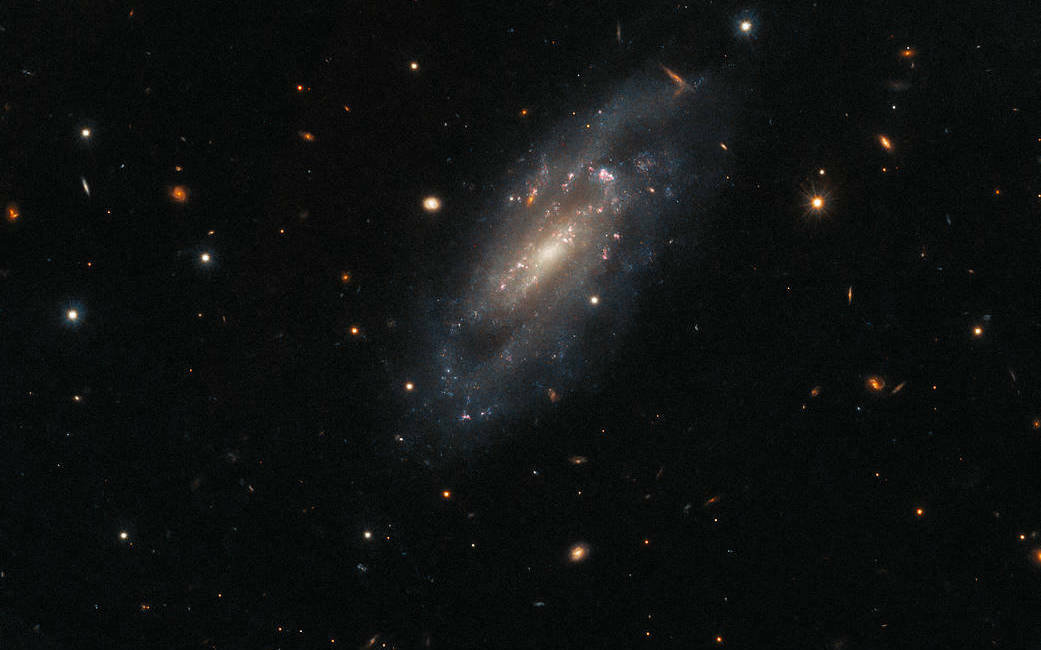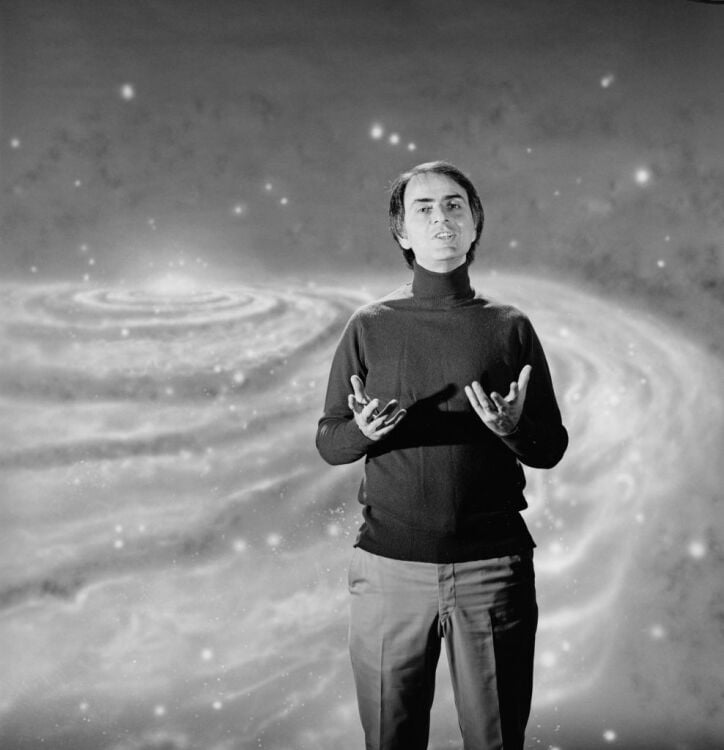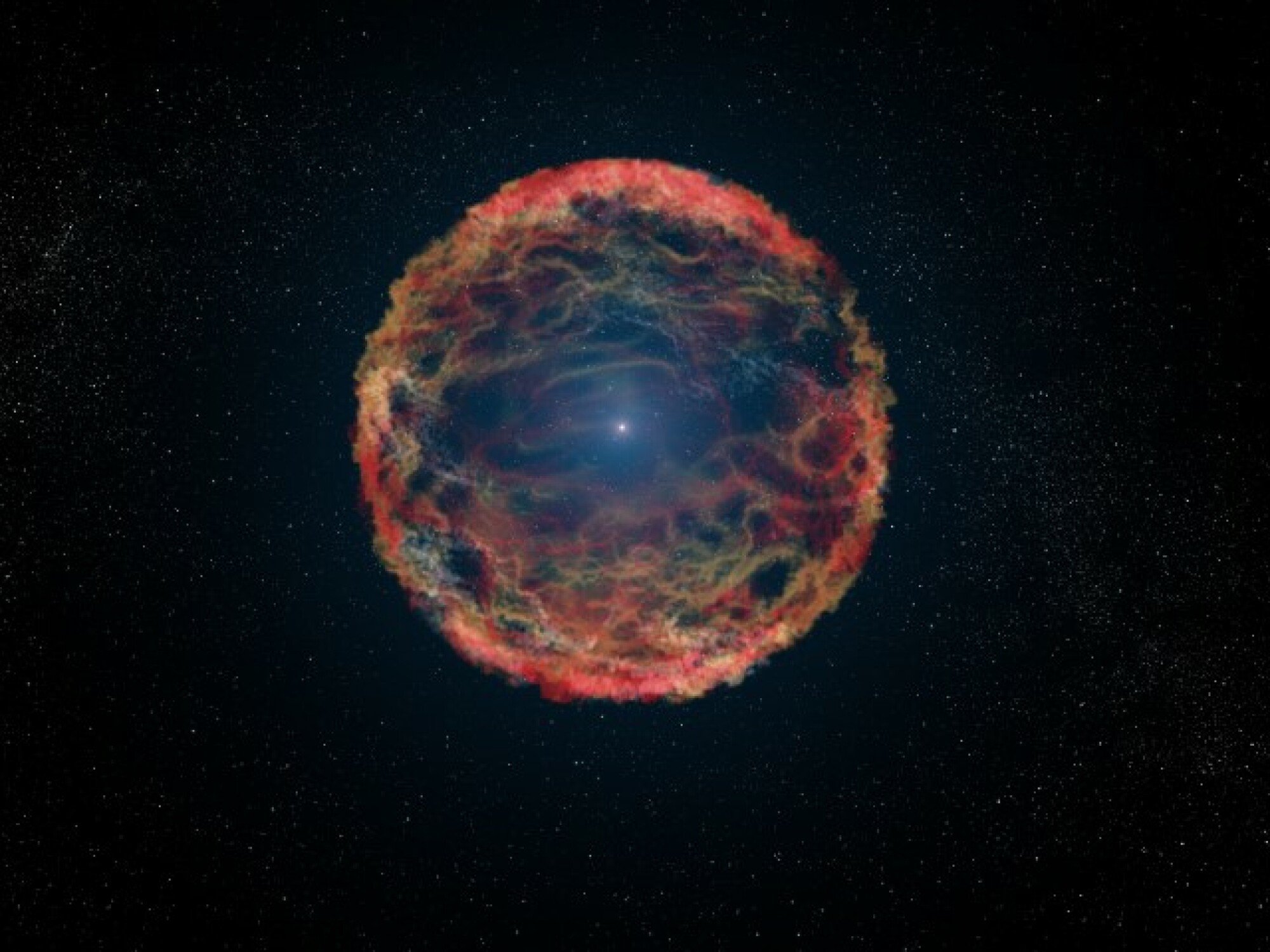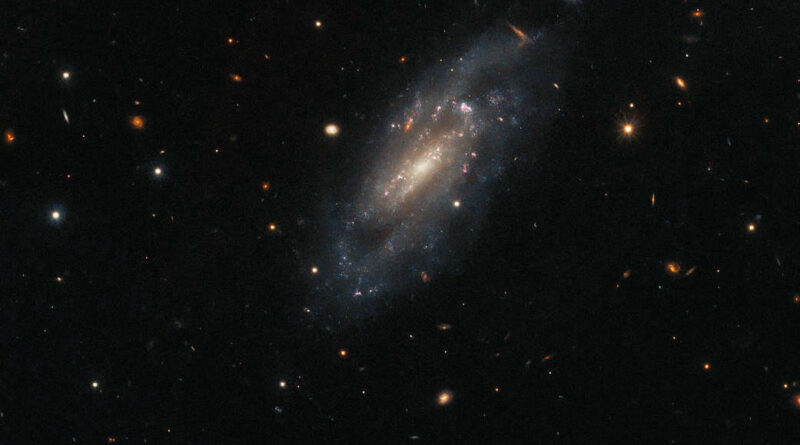Hubble snaps a seemingly peaceful galaxy. Don’t be fooled.

A spiral galaxy in the constellation Pegasus shines from a distance like bone china, a saucer daintily tilted in space.
This region of glowing stars some 184 million light-years from our solar system may seem the picture of tranquility, but astronomers have turned their attention to the dwarf galaxy to study the aftermath of a catastrophic boom.
NASA‘s Hubble Space Telescope captured this image of UGC 11860 from its perch in low-Earth orbit to study the remnants of a supernova. The violent cosmic explosion was first detected in 2014 by the All Sky Automated Survey for Supernovae, a robotic telescope based in Hawaii cheekily referred to as “Assassin.”
Giant stars about eight times the mass of the sun or larger explode into supernovas at the end of their lives and collapse into black holes.
Supernovas, the biggest, brightest, and most violent explosions in the universe, are element factories, astrophysicists say: They make carbon, for instance, the same chemical on which humans and much of life on Earth are based. They spread metals like calcium found in bones and iron in blood across interstellar space. This dispersal seeds new generations of stars and planets.
This is what astronomer Carl Sagan meant when he said we’re made of “star stuff.” The same substances that make our bodies were literally forged within the cores of stars, then flung through the cosmos when they died.

In May, a supernova was discovered in one of the spiral arms of the Pinwheel Galaxy. The explosion is one of the closest spotted in decades, at only 21 million light-years away. That may seem extremely far, but most detected by telescopes have come from between 6 and 13 billion light-years away.
The colossal flash will likely brighten and continue to be visible for many months, if not years. The event has even inspired some astronomers to scan the space around the supernova, in case an advanced alien civilization has decided to use the star’s blast as something akin to a flare gunshot to get our attention.
Want more science and tech news delivered straight to your inbox? Sign up for Mashable’s Light Speed newsletter today.
Not all stars suffer this fate. In fact, a medium star like the sun is not expected to supernova but will gradually run out of nuclear fuel, sloughing off its material in cloud rings that will eventually wither it to its core, a white dwarf star of carbon and oxygen.

The research team investigating UGC 11860 wants to better understand the star systems that eventually go out with the swift kick of a supernova, according to the European Space Agency, which collaborates with NASA on Hubble.
“The hugely energetic processes during supernova explosions are predominantly responsible for forging the elements between silicon and nickel on the periodic table,” according to the agency. “This means that understanding the influence of the masses and compositions of the progenitor star systems is vital to explaining how many of the chemical elements here on Earth originated.”


